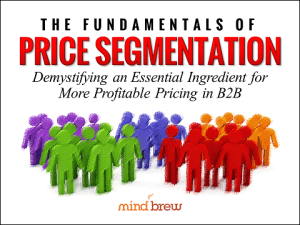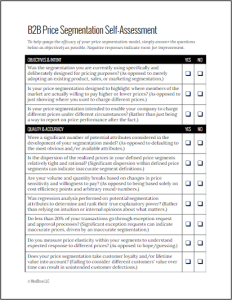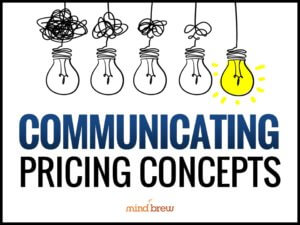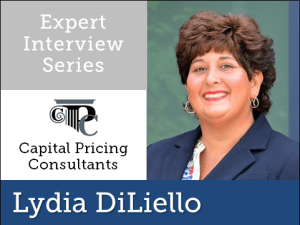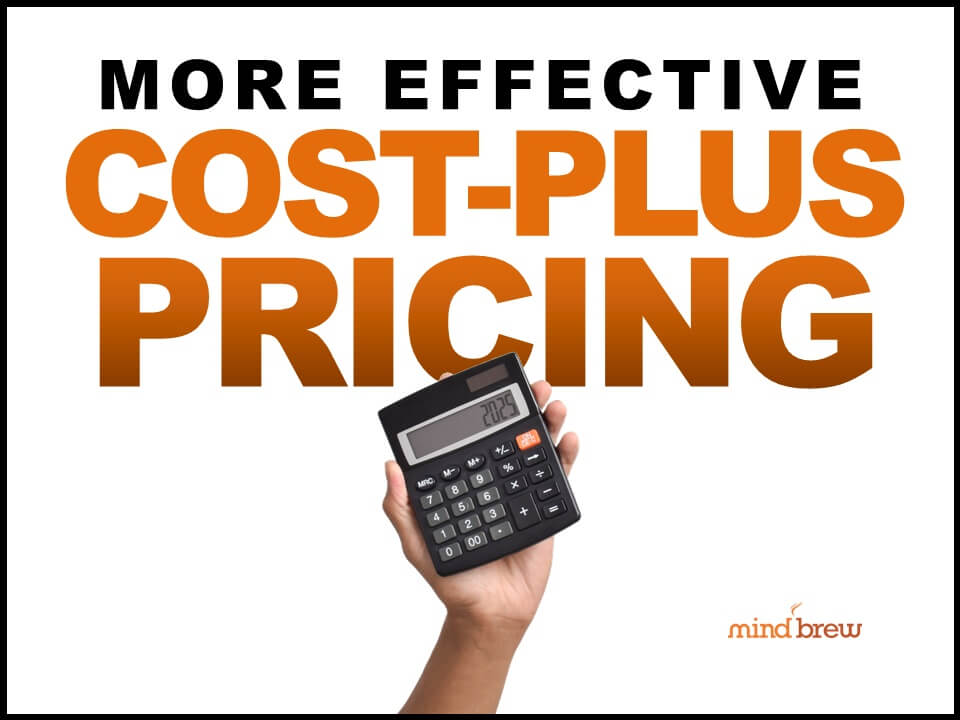As a pricing practitioner, one of the most powerful tools you have at your disposal is good price segmentation. In any market, certain customers are willing to pay more for certain products than other customers are. If you can get each customer to pay the maximum amount that they are willing to pay, you will maximize your margins.
It’s easy to understand price segmentation in theory—but putting it into practice can be much more challenging.
We frequently hear from PricingBrew subscribers who want to know exactly what their pricing segments should look like. How many segments should they have? What criteria should they use for defining a segment?
We wish that we could give everyone a list of pre-defined pricing segments that would work for their companies. But the truth is that every situation is different, so every company’s pricing segments will be different.
What we can offer you is a simple test to determine whether you have a “true” price segment. It’s just one question that you can ask yourself:
Does this pricing segment reflect the unique prices a group of customers are willing to pay for particular products under certain conditions?
That question has several elements, so let’s tease them out a little bit more. First, each pricing segment should be related to a unique price point. If you have multiple pricing segments all willing to pay the same price, those aren’t really unique segments and you should revisit your segmentation.
Second, you need to figure out which customer characteristics are important in setting prices and group those customers together. It may be the customer size. It may be a geographic region. It may be the number of years they have been in business. It may be a particular industry. It may be a combination of all of those or it may have nothing to do with any of those characteristics. As a pricing practitioner, it’s your job to develop a model that works for your organization.
Next, your pricing segmentation has to reflect the prices your customers are willing to pay–not just the prices you want to get. If you are still using cost-plus pricing methodologies, it’s time to rethink your strategy.
Finally, don’t forget to take into account the unique circumstances that might affect a particular deal. Is it a rush order? In that case, you can probably tack on a premium charge. Maybe customers are willing to pay more for certain products near the end of the month or the end of the quarter. Maybe they are willing to pay more or less for orders of a certain size. Maybe customers who have been with you for a long time are less price sensitive than new customers. You need to tease out the variables to find those that are important for your firm.
We also have several other tools that can help you evaluate and optimize your price segmentation. The webinar on The Fundamentals of Price Segmentation provides a good introduction to the key concepts and a good refresher for pricing veterans.
If the simple test above makes you think you might have some problems with your current pricing segmentation, you might want to take the Price Segmentation Self-Assessment. This tool walks you through the key considerations in price segmentation in more detail, helping you spot potential problem areas.
Lastly, we recommend that everyone listen to the interview on Avoiding the Pitfalls of Price Segmentation in B2B with Barrett Thompson, the General Manager of Pricing Excellence Solutions at Zilliant. Barrett explains some of the most common traps that B2B firms fall into and offers excellent advice for avoiding them.

